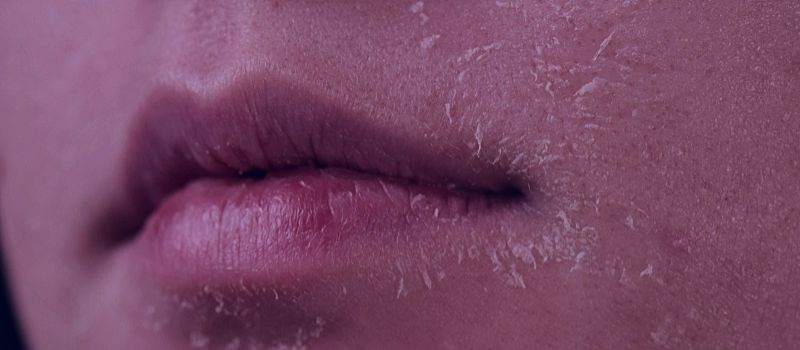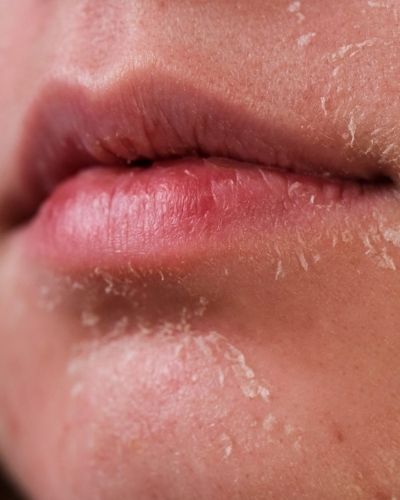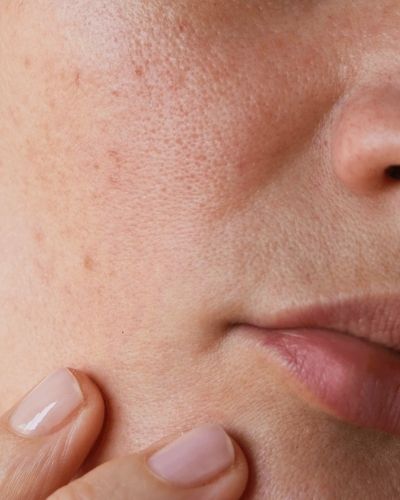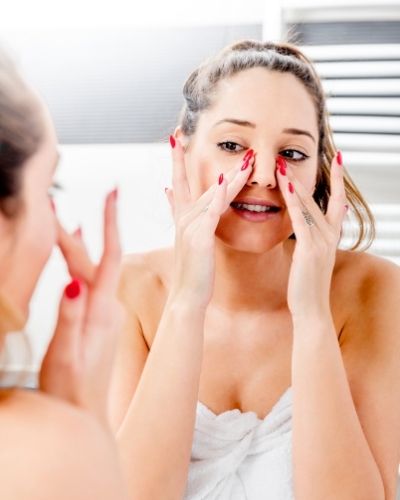If you’re using tretinoin to treat your acne, hyperpigmentation, or premature signs of aging, you want to be sure that these skin concerns are properly addressed with the right treatment.
But how do you know if tretinoin is working for your skin?
Here are some tips to help you figure out if your treatment is effective.

Your Skin is Peeling
Peeling is one of the major and most common side effects of tretinoin use, and although tretinoin will eventually result in improved skin, this initial occurrence is incredibly annoying to deal with.
Peeling occurs because retinoids speed up the cell turnover cycle and increase the speed at which your body sheds dead skin cells.
This occurs in the first 4-6 weeks of using tretinoin and should subside as your skin gets used to the active ingredient.
Additionally, peeling doesn’t only occur on your face and neck, where you would usually apply tretinoin.
It can also occur on your fingertips or palms if you are not washing your hands with soap after applying tretinoin.
In any case, peeling is a sign that your tretinoin is working, and unfortunately, you would have to wait it out if you want to continue using it.
Your Skin Gets Easily Irritated
Irritation is another common side effects tretinoin beginners have to deal with and a sign that your tretinoin is starting to work.
It usually starts as slight tingling and redness when using harsh cleansers, but it can lead to your skin reacting to anything, even plain water.
Irritation usually lasts anywhere from 4-8 weeks, and it should slowly start to subside when your skin starts getting used to the active ingredient.
However, irritation can also continue past this point, and this could mean that the tretinoin strength is just too much for your skin and that you should switch to a lower percentage if possible.
As a rule of thumb, starting with 0.25% is the best option as it lets you slowly build up a tolerance to stronger alternatives and more frequent use.
However, if 0.25% is also too much for your skin, you can opt for an even milder option called tretinoin micro, which usually contains 0.04% of the active ingredient.
Your Skin Gets Dry

Dryness is another common side effect of starting tretinoin that goes hand in hand with peeling and irritation.
Even if your skin is usually oily, tretinoin will likely make it feel dry and parched in the first weeks of using it.
The only way to combat this is by using very gentle, non-foaming cleansers and applying heavier moisturizers that will nourish and soften the skin.
RELATED: Best Moisturizers For Acne-Prone Skin.
Your Skin is Purging
Ah, yes. The infamous tretinoin purge is the main topic of discussion in multiple subreddits, Facebook groups, Twitter, and any other social media platforms where people go for their daily dose of skincare content.
If you have been prescribed tretinoin for acne, you will likely experience a purge in the first few weeks of starting to use it.
Although very annoying and discouraging, a purge actually means that your tretinoin is working.
As I already mentioned above, tretinoin works by speeding up cellular turnover, and this will push all those dead skin cells that didn’t shed properly and instead remained inside the pore, mixing with skin oil and causing clogs that led to acne in the first place.
So what will happen when you start using tretinoin is your skin will basically purge all those clogs to the surface and turn them into pimples so that they can heal and disappear.
And because all of them will come out on the surface at the same time, instead of popping up as one or two pimples every few days or weeks, it will definitely look scary, but it is actually a good thing.
Lastly, while a purge usually lasts anywhere from 8-12 weeks, it’s not uncommon for it to stick around even up to six months or a year, especially if you are using skincare or makeup products that are continuing to clog your pores, because this way tretinoin will just continue to purge the clogs.
The scary part is that you can’t predict how long it will last, and you would have to take your chances instead.
During this time, it’s best to find a support system and connect with people on the internet who are going through the same thing because it can definitely be a very discouraging period, and it helps to have someone to talk to and share how you’re feeling.
RELATED: How Long Does A Differin Purge Last?
Pores Look Smaller and Clearer

Smaller and clearer pores are another great sign that your tretinoin is working.
Even if your skin is purging or getting excessively dry, the pores in the areas that are free of pimples are going to start looking clearer and tighter.
This is yet another result of the rapid skin cell shedding tretinoin induces.
While the pores don’t actually open and close, they do expand to accommodate the excess sebum, dead skin cells, and cellular debris inside them.
So when all that starts getting purged to the surface, the pores will start looking smaller.
RELATED: Will Retinol Shrink Pores?
Sun Sensitivity is Increased
Tretinoin is known to make the skin more sensitive to the sun, and there’s a big chance that you will start experiencing sunburns much quicker than it took you to experience them before starting tretinoin.
This is why wearing sunscreen is absolutely crucial while using tretinoin because the sun damage on the skin has the potential to be even more severe while the skin is vulnerable due to tretinoin.
So if you are experiencing a sudden warmth on your face, even if it’s not that hot outside, it’s a sign that your tretinoin is working and that you need to apply sunscreen ASAP.
Benefits of Using Tretinoin

Consistent tretinoin use will help address many skin concerns, including wrinkles, hyperpigmentation, and acne.
Tretinoin will also give you a clearer, even, and more uniform complexion and will also refine uneven skin texture and improve pitted acne scarring.
RELATED: Beginners Guide to Tretinoin.
How Long Does Tretinoin Take to Work?
While tretinoin starts working right away, long-term benefits and skin improvements will take some time to show.
For acne treatment, improvement is usually seen within 2-3 months of regular use.
Anti-aging benefits of tretinoin will require six months or more, depending on what you are trying to target.
Post-inflammatory hyperpigmentation, uneven skin tone, signs of sun damage (such as brown spots caused by sun exposure) should start fading after six months of consistent use.
Fine lines and deeper wrinkles will likely take longer, and results could be seen after 1-2 years of consistent tretinoin use.
Additionally, any improvement seen requires continual use for maintenance. Assuming the treatment is well tolerated, the only reason to discontinue would be pregnancy.

My name is Simone and I am a certified skin specialist. I created this website to teach my readers how to take great care of their skin and I also like to occasionally share my honest opinions on skincare products I’ve tried. You can learn more about me here.
